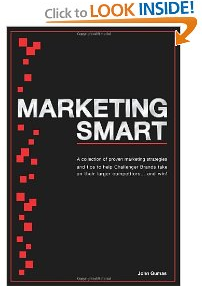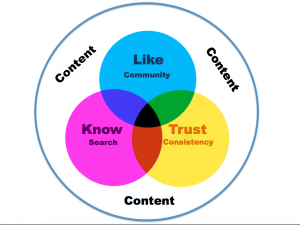Are you Marketing Smart
October 17, 2012
 Marketing Smart by my friend John Gumas from Gumas Advertising is a collection of proven strategies and tips to help you take on your competitors and win!
Marketing Smart by my friend John Gumas from Gumas Advertising is a collection of proven strategies and tips to help you take on your competitors and win!
The book is straight-forward, pragmatic and actionable! Be prepared to dog-ear, highlight and nod your head as you read. You know I don’t love books that tell you what you need to do but don’t tell you how to do it. No worries with this book — every page is a how to primer!
Marketing Smart is written specifically for those professionals who are creating marketing strategies/tactics for Challenger brands — fighting against a bigger competitor who is likely to outspend them every time.
John’s got tons of practical counsel on how those Davids can take their Goliaths and win.
As you know, I like to ask the authors a few questions when I’m reviewing their book. Here’s what John had to say about Marketing Smart.
If you had to describe the content of your book in a single sentence (no run ons) what would it be?
Proven marketing strategies and tips designed to help Challenger Brands maximize their promotional efforts so they take on their larger competitors and win!
What one book that you’ve read do you wish you could claim as your own?
The 7 Habits of Highly Effective People
In your opinion, what is the one trait that all uber successful business people possess?
Drive
What’s the biggest business mistake you’ve ever made and what did you learn from it?
Recognizing opportunity. It only knocks once, so I now make sure I analyze everything as that potential big opportunity.
Why did you have to write this book? What truth or insight was missing from the human consciousness — that you’ve now answered?
I felt there was a real need to write a marketing book designed specifically for Challenger Brands. I wanted to provide proven and practical advise in a step by step format that they should put into use immediately.
After someone is done reading your book — what do you hope they do as a result?
They understand what being a Challenger Brand really means and they learn the strategies needed to be a successful Challenger Brand Marketer. And as a result, they’ll refer back to Marketing Smart for real answers and “how to advice” for years to come.
Ready to take on your Goliath? Get your copy of Marketing Smarts here.
More


















